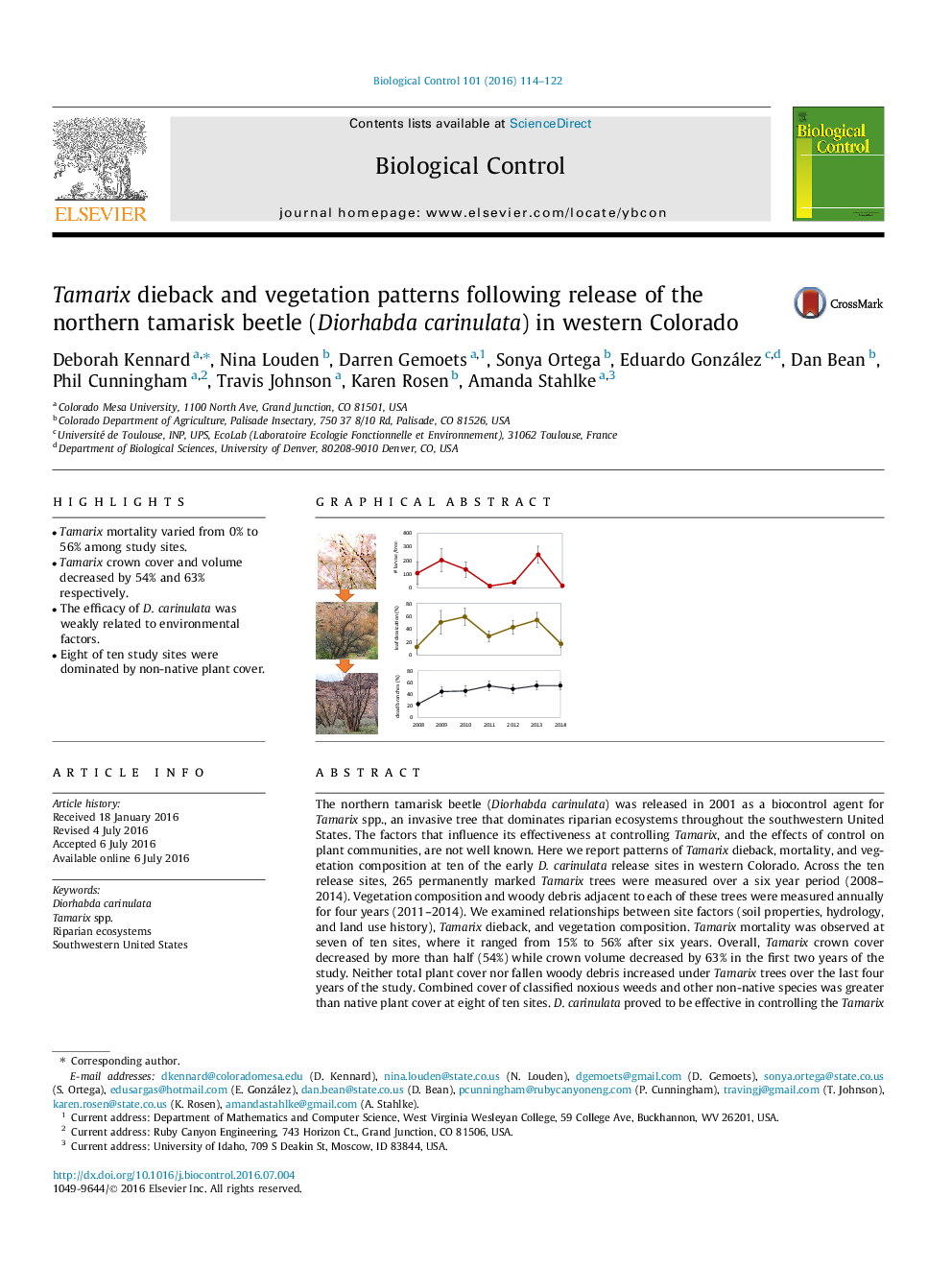| کد مقاله | کد نشریه | سال انتشار | مقاله انگلیسی | نسخه تمام متن |
|---|---|---|---|---|
| 4503611 | 1624233 | 2016 | 9 صفحه PDF | دانلود رایگان |

• Tamarix mortality varied from 0% to 56% among study sites.
• Tamarix crown cover and volume decreased by 54% and 63% respectively.
• The efficacy of D. carinulata was weakly related to environmental factors.
• Eight of ten study sites were dominated by non-native plant cover.
The northern tamarisk beetle (Diorhabda carinulata) was released in 2001 as a biocontrol agent for Tamarix spp., an invasive tree that dominates riparian ecosystems throughout the southwestern United States. The factors that influence its effectiveness at controlling Tamarix, and the effects of control on plant communities, are not well known. Here we report patterns of Tamarix dieback, mortality, and vegetation composition at ten of the early D. carinulata release sites in western Colorado. Across the ten release sites, 265 permanently marked Tamarix trees were measured over a six year period (2008–2014). Vegetation composition and woody debris adjacent to each of these trees were measured annually for four years (2011–2014). We examined relationships between site factors (soil properties, hydrology, and land use history), Tamarix dieback, and vegetation composition. Tamarix mortality was observed at seven of ten sites, where it ranged from 15% to 56% after six years. Overall, Tamarix crown cover decreased by more than half (54%) while crown volume decreased by 63% in the first two years of the study. Neither total plant cover nor fallen woody debris increased under Tamarix trees over the last four years of the study. Combined cover of classified noxious weeds and other non-native species was greater than native plant cover at eight of ten sites. D. carinulata proved to be effective in controlling the Tamarix invasion locally. However, the high cover of noxious weeds will continue to be a management problem, with or without Tamarix control by the northern tamarisk beetle.
Figure optionsDownload as PowerPoint slide
Journal: Biological Control - Volume 101, October 2016, Pages 114–122